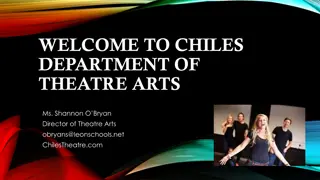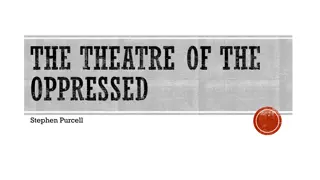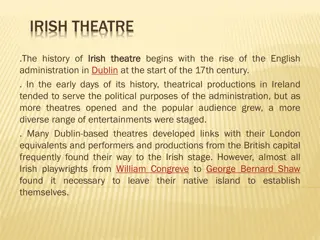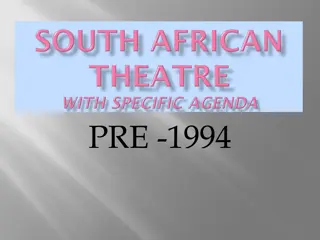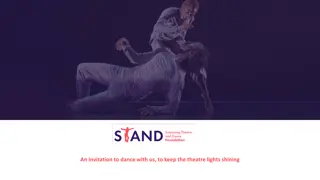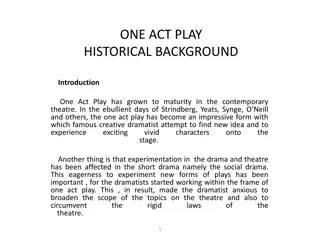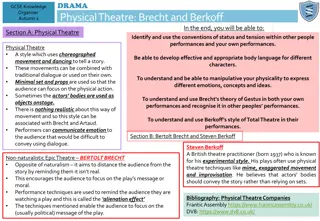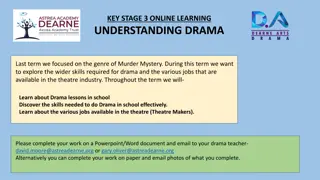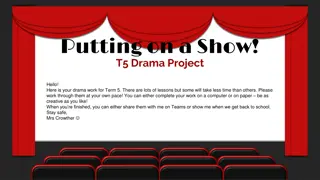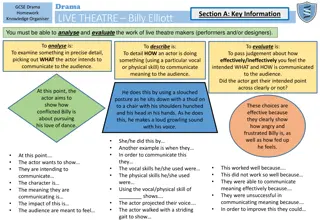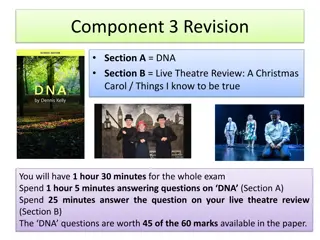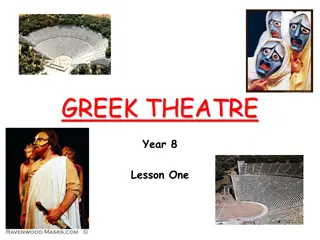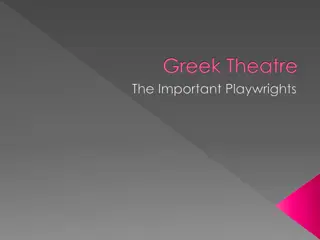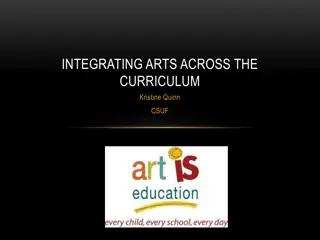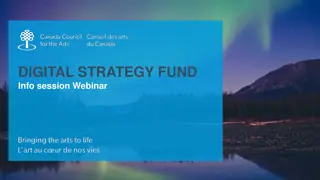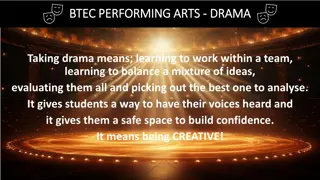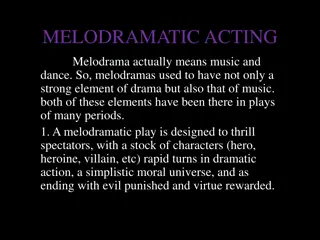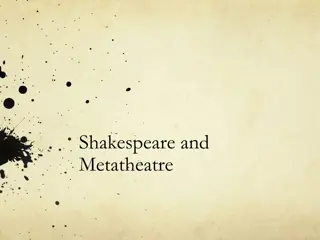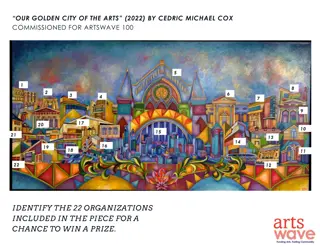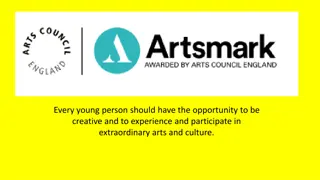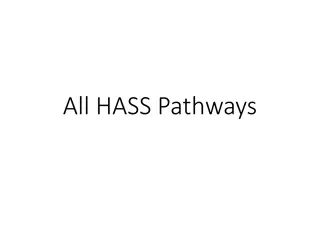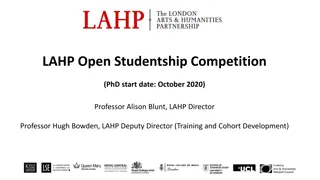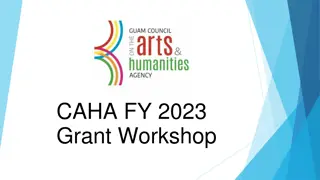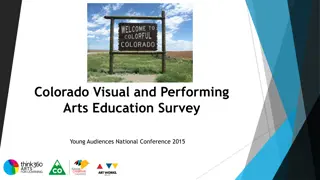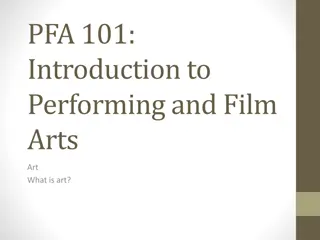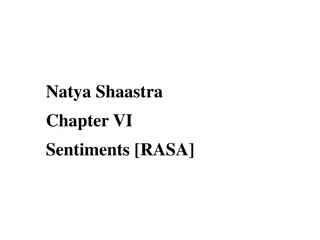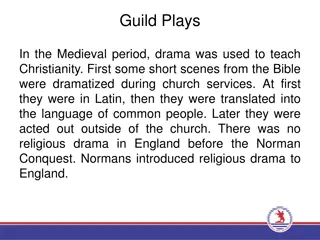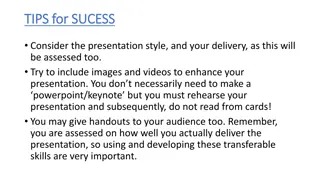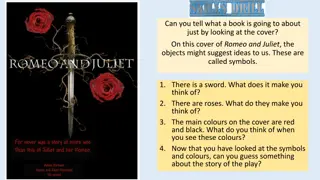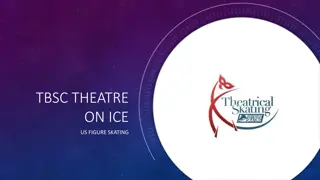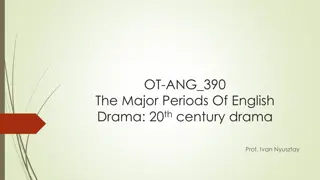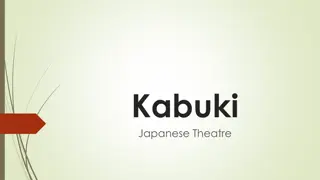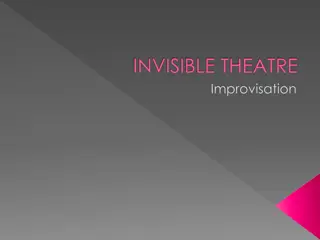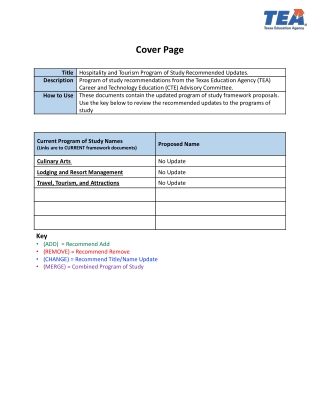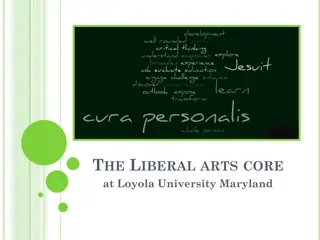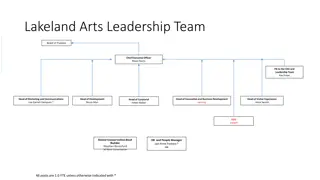Understanding the Structure of Plays in Theatre Arts
Playwrights express ideas and convey messages through the structure of their plays. Analyzing a play's parts, arrangement, and meaning helps audiences grasp the central themes and messages. Key elements like the opening situation, initial incident, rising and falling action, climax, denouement, conflict, theme, and given circumstances contribute to the overall understanding and impact of a play.
Download Presentation

Please find below an Image/Link to download the presentation.
The content on the website is provided AS IS for your information and personal use only. It may not be sold, licensed, or shared on other websites without obtaining consent from the author. Download presentation by click this link. If you encounter any issues during the download, it is possible that the publisher has removed the file from their server.
E N D
Presentation Transcript
PLAY STRUCTURE THEATRE ARTS
PLAY STRUCTURE How does a playwright express ideas and convey messages? How can a structure of a play help audiences gain an understanding of the play s ideas and messages?
PLAY STRUCTURE WHAT IS IT? Analyzing a play to identify its parts, explain its arrangement and deduce the meaning that arises from them and their relation to the whole.
CLIMAX MOOD RISING ACTION FALLING ACTION PLOT THEME INITIAL INCIDENT CONFLICT P vs M P vs Himself P vs Society OPENING SITUATION DENOUEMENT
PLAY STRUCTURE OPENING SITUATION: The scene at the rise of the curtain; introduces location, setting and character. INITIAL INCIDENT: The first event that suggests there will be a change in the situation. Conflict is established and propels the plot forward. RISING / FALLING ACTION: Events which lead to / follow the climax.
PLAY STRUCTURE CLIMAX: The highest point of emotional intensity that occurs near the middle or end, which all action has been leading to. DENOUEMENT: The summary of all events in the play. Moral or theme is clear. MOOD: The emotional state of the play. PLOT: The sequence of events in the play.
PLAY STRUCTURE THEME: The basic idea of the play that gives unity to all the internal elements. CONLFICT: The problem or struggle within the play, involving opposition between the protagonist and antagonist. Man (protagonist) vs. Man Man (protagonist) vs. Society Man (protagonist) vs. Himself
CLIMAX MOOD RISING ACTION FALLING ACTION PLOT THEME INITIAL INCIDENT CONFLICT P vs M P vs Himself P vs Society OPENING SITUATION DENOUEMENT
GIVEN CIRCUMSTANCES The facts that govern the characters in which they live. ENVIRONMENTAL FACTS PREVIOUS ACTION POLAR ATTITUDE
ENVIRONMENTAL FACTS Date (day or year, or Studebaker =60 s car) Geographical Location (house, alley, NY) Social Environment (hobbies, marriage, siblings, job, social events, relationships, status) Political Environment (laws, government, rules) Religious Environment (morals, values, religion) Economic Environment (money, job, status)
PREVIOUS ACTION Information about character s background or plot action that occurred prior to the beginning of the play. Is identified throughout the Rising Action of the play. Helps to give plot and character motivation for the action happening now.
POLAR ATTITUDE The shifting of ideas or attitude of the protagonist, from the beginning of the play to the end. The arc of the main character.
CLIMAX MOOD PLOT FALLING ACTION RISING ACTION THEME CONFLICT P vs M P vs Himself P vs Society INITIAL INCIDENT OPENING SITUATION DENOUEMENT


